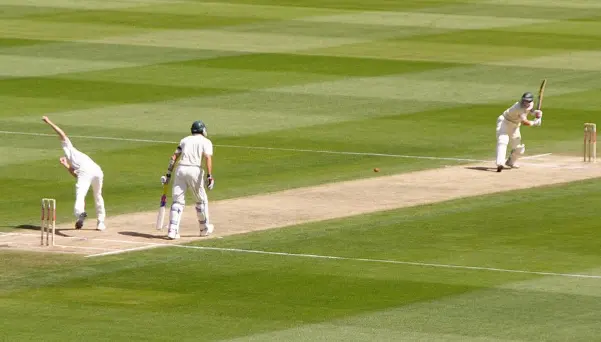Cricket has a long history and is played in many different formats, each with its own duration and tempo. ODI, T20, and Test are the three main game types, and their durations differ substantially.
Test matches are the oldest format and last five days, with each team batting twice (if time permits). Six hours of cricket are played in a full day, which is typically split into three two-hour periods. This means that the total match can span up to 30 hours over five days.
In ODIs, which are limited-overs matches, each team plays 50 overs. They often run seven to eight hours, including a mid-game break. List A matches mirror ODIs but are played in domestic leagues.
T20s, the shortest international event, lasts three to four hours and consists of twenty overs per side.
T10s, the shortest official format, last about 90 minutes to 2 hours, with each team facing 10 overs.
The Hundred, popular in England, features 100 balls per side and typically runs for 2.5 hours.
Domestic first-class matches follow Test rules but last 3-4 days.

There are several factors that can influence how long a cricket match lasts, regardless of its format.
Delays brought on by bad weather, particularly rain, may cause playtime to be shortened or delayed. Play may occasionally be stopped during Test matches due to poor lighting.
Another important factor is over rates, or how fast teams bowl their overs. Games may last longer than anticipated due to slow over rates, particularly in Test and ODI matches.
Strategic time-outs and inning breaks are used in various T20 competitions for extending the match.
Match time can be affected by fielding party behavior, injury stoppages, and frequent reviews (DRS).
The length of professional or club cricket matches varies based on league regulations.
Club matches can last anywhere from three to seven hours and include 20, 40, or 50 overs each team. To accommodate players' schedules, weekend leagues sometimes choose for 40-over formats.
Young people usually play even shorter games at school; for instance, families' cricket or 20-over matches usually take two to three hours to finish.
Domestic T20 leagues worldwide adhere to international standards, with games lasting roughly three hours apiece, while domestic first-class matches resemble Test cricket, which can run up to four days.
It takes more time to watch live cricket at the stadium as it does to see the game, plus additional time for access, seats, and departures. Twenty20 matches are perfect for trips in the evening, but test matches may need all-day commitments.
You may, however, avoid commercials, slow overs, and even innings breaks when watching on TV if you use DVRs or highlights. This significantly increases the T20 and ODIs' digestibility for casual viewers. Concise match formats, such as "Match Highlights in 60 Minutes," are also provided by countless broadcasters, which increases cricket's accessibility.
Cricket matches vary greatly in length—from 3-hour T20s to 5-day Tests. Weather, gameplay pace, and competition level all influence duration. At amateur levels, games are often shortened for practicality, and watching live or on TV can greatly change your time commitment. Whether you're a casual viewer or a die-hard fan, there's a format—and timeframe—for everyone in cricket.